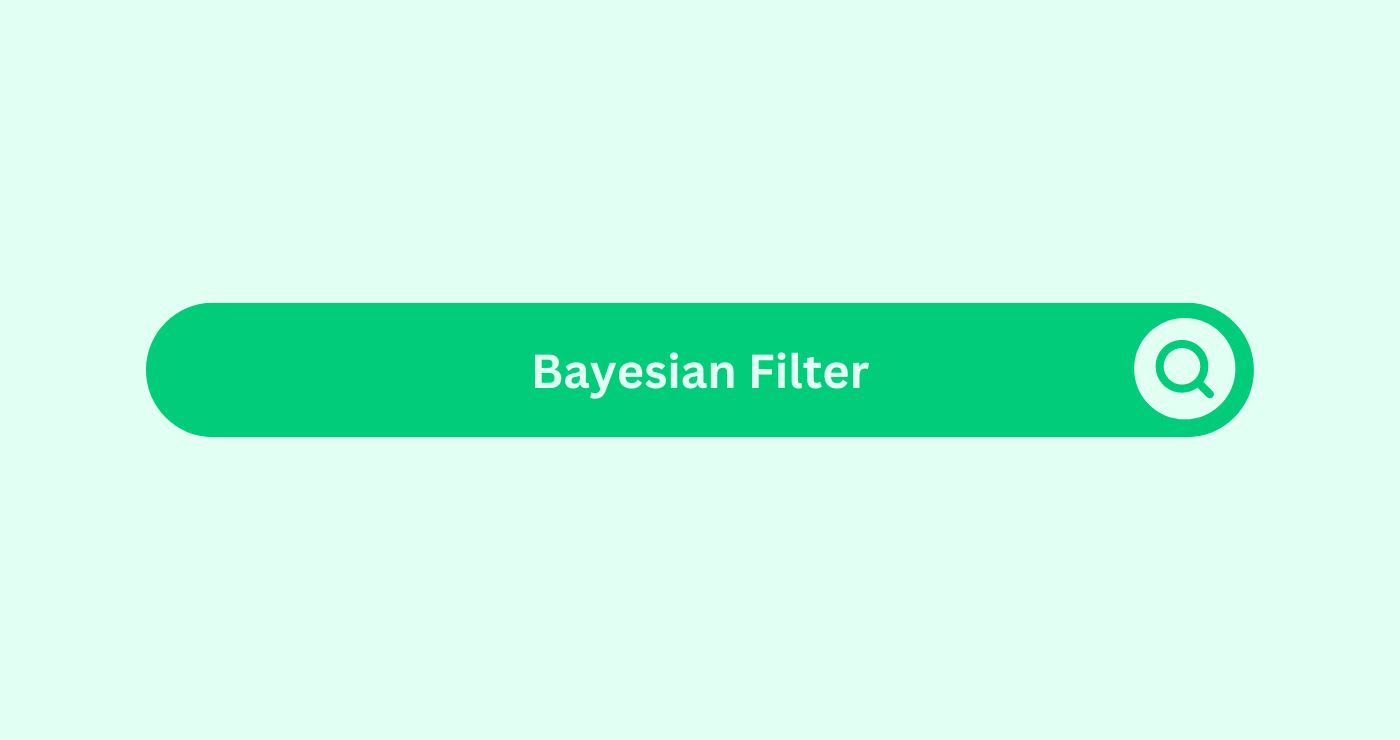Definition
A Bayesian filterDefinition Filter in Social Media Marketing involves narrowi... classifies email spam based on word and phrase frequencyDefinition Frequency in Social Media Marketing refers to the.... It predicts spam likelihood by analysing email content. The filterDefinition Filter in Social Media Marketing involves narrowi... learns from known emails to recognise spam patterns accurately. It calculates category probability using specific features. This approach is effective at identifying new spam patterns. In SEO, a Bayesian filterDefinition Filter in Social Media Marketing involves narrowi... helps in managing spam for better user experience and search rankings.
How You Can Use
Example
Consider a scenario where you manage a large e-commerce website that includes a user review section. Spam reviews can negatively impact the user experience and SEO performance. Here’s how you can use a Bayesian filterDefinition Filter in Social Media Marketing involves narrowi... to manage this:
- Training the FilterDefinition Filter in Social Media Marketing involves narrowi...: Begin by collecting a dataset of known spam and legitimate reviews. The Bayesian filterDefinition Filter in Social Media Marketing involves narrowi... will use this dataset to identify common features in spam reviews, such as certain keywordsDefinition Keywords are crucial for SEO success as they conn... or patterns.
- Implementing the FilterDefinition Filter in Social Media Marketing involves narrowi...: Integrate the trained Bayesian FilterDefinition Filter in Social Media Marketing involves narrowi... into your website’s review submission system. The filterDefinition Filter in Social Media Marketing involves narrowi... analyses new reviews to determine if they are likely spam.
- Automated Action: Set a threshold for spam probability. If a review’s spam scoreDefinition Moz developed the Spam Score metric in the SEO sp... exceeds this threshold, it can be flagged for further review by a moderator or automatically rejected.
- Continuous Improvement: Regularly update the training dataset with new examples of spam and legitimate reviews. Retrain the Bayesian filterDefinition Filter in Social Media Marketing involves narrowi... periodically to ensure it adapts to new spam tactics.
By using a Bayesian FilterDefinition Filter in Social Media Marketing involves narrowi... in this way, you can effectively manage and reduce spam content on your website, improving the overall user experience and protecting your site’s SEO performance.
Formulas and Calculations
Bayesian Filters rely on Bayes’ Theorem, which is expressed as follows:
P(A∣B)=P(B∣A)⋅P(A)P(B)P(A|B) = \frac{P(B|A) \cdot P(A)}{P(B)}P(A∣B)=P(B)P(B∣A)⋅P(A)
In the context of spam filtering:
- P(A∣B)P(A|B)P(A∣B) is the probability that an email is spam given the presence of certain features (words/phrases).
- P(B∣A)P(B|A)P(B∣A) is the probability of those features occurring in spam emails.
- P(A)P(A)P(A) is the overall probability of any email being spam.
- P(B)P(B)P(B) is the overall probability of those features occurring in any email.
The filterDefinition Filter in Social Media Marketing involves narrowi... calculates these probabilities for each feature in an email and combines them to assign an overall spam scoreDefinition Moz developed the Spam Score metric in the SEO sp... to the message.
Key Takeaways
- Adaptability: Bayesian filters adapt to new types of spam, improving their effectiveness over time.
- Efficiency: By automating spam detection, these filters save time and resources in content moderationDefinition Content moderation in social media marketing refe....
- Accuracy: High accuracy in distinguishing spam from legitimate content enhances the user experience and site integrity.
- Continuous Improvement: Regularly updating the training data ensures the filterDefinition Filter in Social Media Marketing involves narrowi... remains effective against evolving spam tactics.
- SEO Benefits: Reducing spam content on a website helps maintain high-quality user engagementDefinition Engagement in content marketing refers to the deg... and protects against SEO penalties.
FAQs
What is a Bayesian Filter?
A Bayesian FilterDefinition Filter in Social Media Marketing involves narrowi... is a statistical tool used to classify emails or content as spam or not spam based on probabilistic inference.
How does a Bayesian Filter work?
It calculates the probability that an email is spam by analyzing the presence of specific features and comparing them to known examples of spam and legitimate content.
Why is a Bayesian Filter effective?
It adapts to new spam types and continuously improves as more data is processed, maintaining high accuracy in spam detection.
Can Bayesian Filters be used for purposes other than email filtering?
Yes, they can be used to filterDefinition Filter in Social Media Marketing involves narrowi... spam in user comments, reviews, and other types of content on websites.
What are the key components of a Bayesian Filter?
Training data (known spam and legitimate content), feature extraction (identifying spam indicators), and probabilistic scoring based on Bayes' Theorem.
How often should a Bayesian Filter be retrained?
Regular retraining is recommended to ensure the filterDefinition Filter in Social Media Marketing involves narrowi... adapts to new spam tactics and maintains its accuracy.
Can Bayesian Filters be customized for specific types of spam?
Yes, they can be tailored to recognize spam characteristics relevant to specific contexts or industries.
What are the limitations of Bayesian Filters?
They require a significant amount of training data to be effective and may need regular updates to stay current with new spam trends.
How do Bayesian Filters improve SEO?
By reducing spam content, they enhance user engagementDefinition Engagement in content marketing refers to the deg... and protect against spam-related SEO penalties.
Are Bayesian Filters suitable for all websites?
They are suitable for any website that needs to manage and reduce spam content, particularly those with user-generated content.




